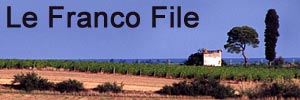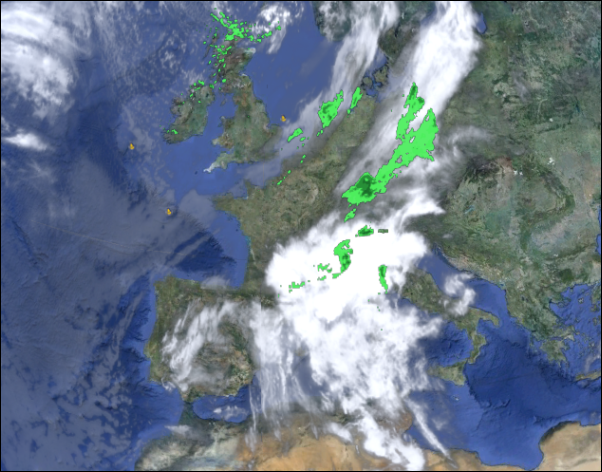A couple of things came together to make our current June long weekend – well, longish weekend – our first UK trip of the year.
Firstly, winter 2012 began in the UK sometime in April. As far as I can recall, after all the bottles of wine I’ve consumed since, there had been some good weather in March 2012 but that was it for that calendar year; bad weather commenced in April 2012 and continued until June 2013. The UK has endured a 14-month run of crap weather, a spell which I choose to dub “the winter that wouldn’t quit”.
Secondly, the cataract in my right eye, which has been developing for a couple of years, became a positive nuisance early in what should have been spring 2013. Those who have been paying attention will have realized that spring 2013 didn’t actually happen, those months still falling under the spell of winter 2012 – the winter that wouldn’t quit. Anyway, the net curtain that veils vision in my right eye is more noticeable this year and I’m having a little more difficulty tracking flying insects with less depth perception. I wanted something done about it. I wanted a new right eyeball. That meant staying in this country while the medical wheels grind round, so we rearranged our usual June ferry to France.
After the winter that wouldn’t quit, stir craziness has well and truly set in. However, sticking around in the UK during June has its compensations in that it enables one to see things that one would normally be absent for, given suitable weather, of course. Thus, when June began with long-awaited sunshine, albeit in the grip of easterly winds keeping the temperatures lower than would normally have been expected, and when reports emerged of a relatively rare dragonfly having emerged at Whixall Moss, we took the plunge and arranged for Guillaume’s first trip of the year to see if we could find one. Our usual Caravan Club didn’t have any sites suitably close but Francine found a site run by the opposition, the Camping and Caravanning Club, about 12 miles south of our target location, just outside Shrewsbury. We’re already members but we’d never used ‘em before. Neither had we visited this part of the country before. We bit the bullet and went for it. New turf, new organization – scary spiders!
 Guillaume has never been unwrapped so late in the year and he was eager to go. We’re booked in for just three nights so it was a simple matter of taking a bag full of clothes, hitching up and hitting the M1, M6 and M54. 2¼ hours of relaxed towing, during which time I was phoned with a date for my cataract operation [next Thursday – hooray!], had us pitching up in pastures new, and very pleasantly surprised we are, too. The staff seemed very friendly and the campsite, an old hill fort called Ebury Hill, is a delight. There is even a flooded old quarry on site. Promising!
Guillaume has never been unwrapped so late in the year and he was eager to go. We’re booked in for just three nights so it was a simple matter of taking a bag full of clothes, hitching up and hitting the M1, M6 and M54. 2¼ hours of relaxed towing, during which time I was phoned with a date for my cataract operation [next Thursday – hooray!], had us pitching up in pastures new, and very pleasantly surprised we are, too. The staff seemed very friendly and the campsite, an old hill fort called Ebury Hill, is a delight. There is even a flooded old quarry on site. Promising!
 Somehow, after such a long break, we managed to remember how to set up Guillaume and got settled. After the obligatory installation beer and lunch, we went to investigate the lake in the afternoon sun. I immediately spotted several Azure Damselflies (Coenagrion puella) and we soon added Common Blue Damselflies (Enallagma cyathigerum) and Large Red Damselflies (Pyrrhosoma nymhula). The sun was warm, even if the air wasn’t, and they were doing what comes naturally. 🙂
Somehow, after such a long break, we managed to remember how to set up Guillaume and got settled. After the obligatory installation beer and lunch, we went to investigate the lake in the afternoon sun. I immediately spotted several Azure Damselflies (Coenagrion puella) and we soon added Common Blue Damselflies (Enallagma cyathigerum) and Large Red Damselflies (Pyrrhosoma nymhula). The sun was warm, even if the air wasn’t, and they were doing what comes naturally. 🙂
 I was beginning to think that was it when, as we were watching the damselfly sex show, there was a green flash as a dragonfly zoomed past along the bank. Green candidates are few and I suspected it was a Downy Emerald (Cordulia aenea). I tried an in-flight shot which was just a tad laughable but proved good enough for identification. Eventually, further round the lake, we spotted it again and it settled, though not brilliantly positioned. Here the celebrity is. I say celebrity but Downies aren’t especially rare, there are just large parts of the country where they aren’t.
I was beginning to think that was it when, as we were watching the damselfly sex show, there was a green flash as a dragonfly zoomed past along the bank. Green candidates are few and I suspected it was a Downy Emerald (Cordulia aenea). I tried an in-flight shot which was just a tad laughable but proved good enough for identification. Eventually, further round the lake, we spotted it again and it settled, though not brilliantly positioned. Here the celebrity is. I say celebrity but Downies aren’t especially rare, there are just large parts of the country where they aren’t.
Next, a Broad-bodied Chaser whizzed past but that was the last we saw of it. Then we found a Blue-tailed Damselfly (Ischnura elegans), making s full set of our common damselflies. A little further round the lake we found a surprising pair of Beautiful Demoiselles (Calopteryx virgo) – surprising because this is not running water which is where I expect them. Finally, staring into the middle of the lake on some floating vegetation, as is their habit, I could just make out a few Red-eyed Damselflies (Erythromma najas).
Eight Odonata species, right on our doorstep. It didn’t include the very specific species we travelled here for – that requires very special habitat, more of which later – but what the hell, it was good.
 Finally, I want to show you this. I’m used to hairdressers having amusing names but this is terrific. The rubbish and recycling bins on this campsite are provided by “P.G. Skips Ltd”. How great is that? I love it!
Finally, I want to show you this. I’m used to hairdressers having amusing names but this is terrific. The rubbish and recycling bins on this campsite are provided by “P.G. Skips Ltd”. How great is that? I love it!









































Recent Comments